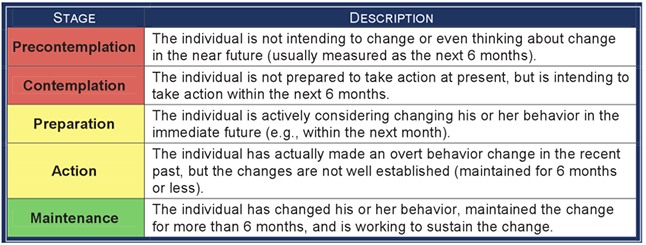Here we are in October 2013. Hurricane Sandy hit New Jersey just 1 year ago, yet how quickly we forget.
It’s been such a calm summer and fall. It’s easy to see why some companies – even those who were impacted by Sandy – still haven’t set up a voice continuity plan.
I’ve been reading a very interesting report published by FEMA in 2009 (three years before Sandy) – “Personal Preparedness in America: Findings From the 2009 Citizen Corps National Survey.”
Two parts of this report stood out:
- The Stages of Change Model. FEMA looked at preparedness behavior using the Transtheoretical Model of Behavior Change. According to the report, people show varying degrees of readiness to change. The five states are listed and described in this scan from the report. The interesting parts of that chart are between stages 1, 2 and 3. What makes someone actually begin to have awareness and then take action? The FEMA report goes into depth on that subject. After all, the goal of this report is to help responders educate people about the need for emergency preparedness even in calm seasons.
- Trying to motivate others to prepare for disasters requires a better understanding of the motivating factors and barriers to preparedness. The FEMA report places a great deal of emphasis on the use of social media to spread the word. Here at Cooperative Communications, Inc, we’re happy to have joined the ranks of companies using social media to spread the word.

Further Reading:
CNN.com asks, “Where have all the hurricanes gone?”
The Weather Channel report on the 2013 hurricane season
USAtoday.com says, “Hurricane season has been a dud despite dire forecasts
